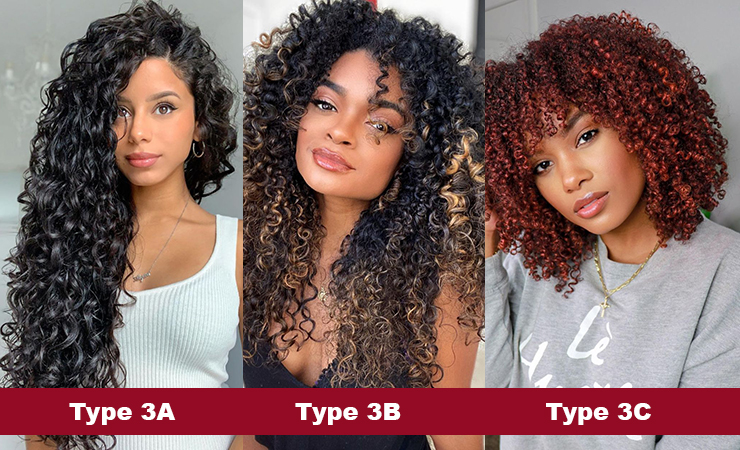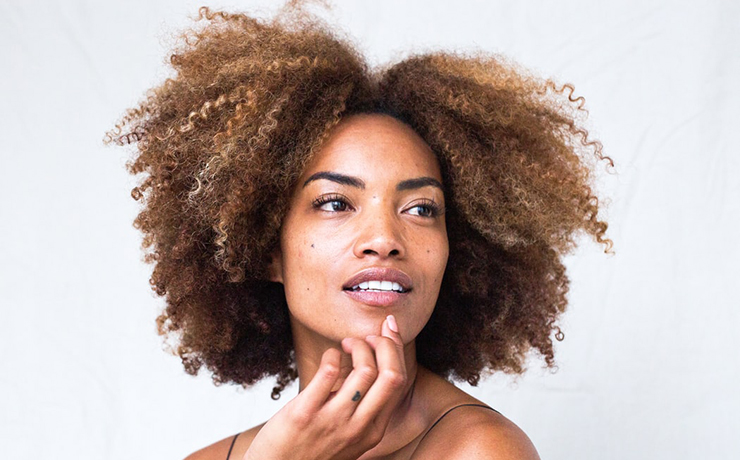What’s Your Hair Type? A Complete Guide

My mother spent years perming her poker straight British hair to give it some body and my father spent every 3rd Saturday at the barbers, clipping his aboriginal coarse afro waves super short, to keep the unwanted tiny natural finger waves at bay.
My older sister and I were both born with hair, our parents had absolutely had no knowledge of, nor understanding whatsoever.
As my sister and I grew up and become more fashionably aware, we realised we actually had ringleted curly hair, that our mother had no idea how to handle. When we look back at old photographs of ourselves, we cringe, mainly because we had the worst hairstyles. I remember my mother saying to me that my hair always looked messy so she was constantly combing it flat after it had been shampooed to make it dry smoother, and to disguise what she called “unruly hair”. I think my sister got similar treatment.
It wasn’t until the age of 10 that I asked my mother if I could get a perm — as I wanted my hair like a guy from an 80’s TV show ‘The Professionals’ — she informed me that I actually already had hair like his and I didn’t need a perm. I remember being in total shock at this discovery. I had no idea, this type of hair texture actually existed on my head. My sister didn’t either, although being 4 years older she had started experimenting with hair colours and 80’s hairstyles, so the realisation was starting to kick in.
As you can imagine, since becoming a hairdresser I’ve been on the eternal search for the right products for our hair type, plus I’ve been trying to understand our hair type too, which I now know falls under the category of Type 3B and a bit of 3C.
The hair type system, originally started by the hairstylist Andre Walker, has been revised more recently by the wavy, curly, coily hair community on various occasions. I don’t think it’s necessarily 100% accurate but is very useful in helping to identify your curl patterns.

Hair Types
In its simplest form: Type 1s are straight, Type 2s are waves, Type 3s are curls, and Type 4s are Coils commonly referred to as afro or kinky hair.
These are divided into subcategories of A, B and C, based on the width, diameter and texture.
Hair type is determined by the shape of the follicle where the hair grows out from your scalp. Flatter, oval-shaped follicles, create curlier hair; circular follicles create straighter hair. Your type is then identified by the shape that the strands of hair make. Studying your hair when wet and dry will help you determine your type better. My hair for example, shrinks quite a lot when dry, so the curls look tighter drier than when wet, whereas some hair dries in a similar form as when it’s wet. This normally happens more when hair is a looser wave rather than super curly or coiled.
So, let’s take a closer look at each hair type!

Type 1 — Straight Hair
The most common hair type for Caucasian, Asian or European people, which is then defined by being, fine, thick, medium with the thicker hair tending to need more maintenance, although fine hair is often tackled with the use of thickening shampoos, conditioners and styling products, and can be equally as high maintenance.
Type 1A is as straight as can be, tends to be soft, shiny but on the fine side, and doesn’t hold curls well;
Type 1B tends to be straight but has more body than type 1A;
Type 1C is straight, but with some body and also a bit of bend which can be curled and it will hold.

Type 2 — Wavy
Waves can range from being fine to coarse.
Type 2A hair is the barely-there tousled wavy texture that’s easily straightened. It lacks volume at the root. and has a very soft S pattern that generally lies flatter to the head;
Type 2B hair tends to be flatter on the top with more defined S-shaped waves further down the length. Each individual strand tends to be thicker than type 2A;
Type 2C hair generally has a more defined S shape from the roots and can be a little more coarse or dry in texture too.

Type 3 — Curly
Type 3 curly ranges from loose, buoyant curls to tight, springy corkscrews which are prone to looking dry and frizzy.
Type 3A strands tend to be large, loose curls that are about the size of a piece of cork from a bottle of wine to a piece of chalk;
Type 3B is springy ringlet curls as if the hair has been wrapped around a pen. This hair texture tends to be dry and often frizzy also;
Type 3C hair has tight corkscrew curls that range in circumference from a straw to a pencil. Strands are densely packed together, creating natural volume. Frizziness can also be an issue with this hair type. Use a sulfate-free, creamy cleanser , so as not to dry out your hair.

Type 4 — Coily
Coily hair, most often referred to as afro or kinky hair, is naturally dry and spongy in texture and ranges from soft and fine to coarse and wiry. This hair forms super tight, small curls and/or zigzags from the scalp and are prone to major shrinkage once dried off after shampooing.
Type 4A hair is dense and springy, The coils are like hair that’s been wrapped around a pipe cleaner;
Type 4B strands are densely packed and can bend in sharp angles somewhere between the letter S and the letter Z;
Type 4C textures are quite similar to 4B textures, but the tightly coiled strands are often more fragile and look to have a very tight zig-zag pattern.

Why is wavy, curly, coily, kinky and hair prone to frizz & dryness?
These hair types are drier than straight hair, basically because the amount of natural oils produced by our scalp can’t travel as easily down the hair shaft like it does on straight hair. These hair types can also look frizzier if it hasn’t been bonded together to create a defined curl. Once you identify your hair type, you’ll find it a lot easier to manage your hair!
Neil Moodie

